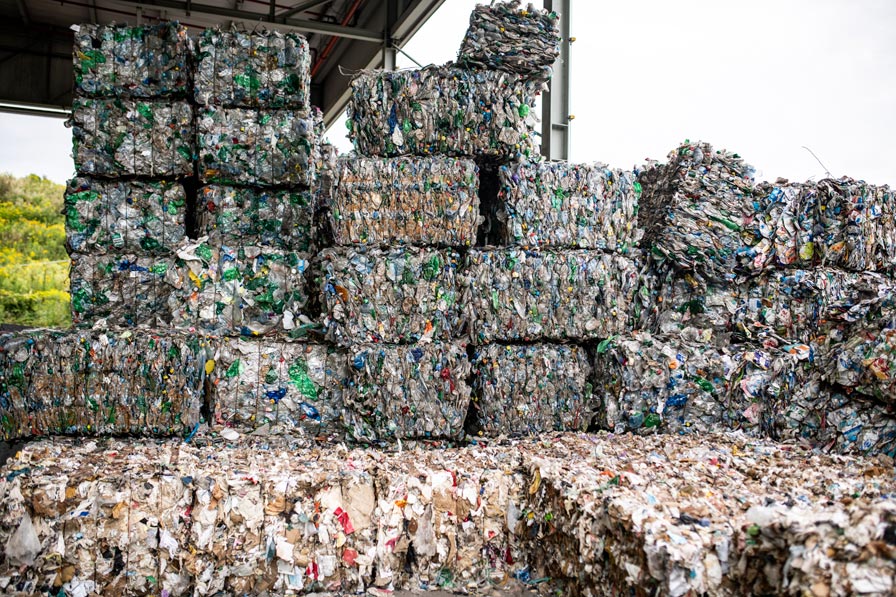We are preserving air quality and reducing greenhouse gas emissions

BioNGV is a fuel for private or business vehicles. With it, we are promoting more sustainable mobility that is less harmful to people and the environment. How is it created? What are its virtues? Where to find it?
Many trucks, buses, and coaches, as well as new generation cars, display logos or texts praising the merits of the fuel they use: bioNGV. Derived from renewable gases, bioNGV transforms the impact of our journeys and protects our environment. The proof…
Renewable gases can also be used as fuel
Renewable gases are not only used for heating or cooking. Under the name bioNGV, it is also a fuel! Produced from organic materials coming from agriculture, household, or industrial waste, bioNGV is the renewable version of NGV (Natural Gas for Vehicles) available at the pump.
With bioNGV, we have ushered in a new era for air.
BioNGV combustion occurs with almost zero fine particle emissions which, it is worth noting, are responsible for many lung and cardiovascular diseases1. Another aspect that affects the air we breathe is that bioNGV produces half the level of NOx (nitrogen oxides) emissions that is considered acceptable by the Euro 6 standard threshold, the toughest standard in this respect.
The use of bioNGV also reduces the ecological footprint of our journeys. By virtue of its production process, bioNGV contributes to an 80% reduction in carbon dioxide (CO2) emissions compared to a diesel vehicle of the same generation. That is not a trivial fact since excessive CO2 emissions are one of the main causes of climate change! Other advantages include the fact that bioNGV does not evaporate when refueling the vehicle and it also does not emit benzene, a substance that is dangerous for your health. Finally, using it halves the noise of light vehicle engines, and it reduces the noise2 of heavy goods vehicles by one third.
bioGNV is becoming more readily available at fuel stations
With an exemplary, almost neutral, carbon footprint, driving a bioNGV vehicle is a more responsible choice than ever, but one pressing question remains: is it easy to refuel? Year after year, the network of fuel stations is gradually increasing. As of the end of 2020, there are 200 public stations3 and, according to the Multiannual Energy Programme, the network is expected to increase to 850 stations by 2028. Furthermore, bioNGV is becoming increasingly accessible in terms of price. For example, in October 2020, the Agriopale de Saumure station offered a price at the pump of €1.1/kg incl. VAT. This is quite a competitive price compared to diesel which is €1.41 per kg incl. VAT (bearing in mind that the consumption of a bioNGV vehicle is very similar to that of a diesel vehicle).
Refuelling is stress free, refuelling in express filling stations takes no more than a few minutes. For bus operators converted to bioNGV, there are more suitable solutions, that involve refuelling the vehicle overnight instead. This facilitates operations and reduces manoeuvring in the depot.
Whether for personal or business use, a bioNGV vehicle can travel everywhere
Since July 2016, bioNGV vehicles have been CRIT’AIR 1 certified, just like NGV vehicles. Because of this, they are not subject to traffic bans during periods of peak pollution and can even benefit from perks offered by certain cities, including exceptional access to the city centre, preferential parking, etc. Thanks to their ecological and health benefits, fleets of business bioNGV vehicles can travel unrestricted in Low Emission Zones that are becoming more common in the heart of cities. BioNGV can, therefore, facilitate more flexible management of transport activity for example, by adopting staggered delivery times.
Almost all vehicles can run on bioNGV
If you are a private individual, you can choose from several light vehicle brands that have a variety of models that run on bioNGV. You can also have your petrol vehicle converted by a specialist installer, but this is not an option for diesel engines. Finally, if your vehicle is already running on NGV, it requires no adaption to switch to bioNGV.
For business use, manufacturers of heavy goods vehicles, buses, coaches and even bin lorries, offer models suitable for all transport needs. Existing fleets of vehicles can be converted once an analysis is carried out, taking into account the type of vehicle in question, its planned use, type of journeys it makes, annual mileage, parking, etc.
There will be nearly two million bioNGV cars in 2035
While the number of passenger cars and light commercial vehicles (transport vehicles with a gross vehicle weight of less than 3.5 tonnes) reached 10,500 units in 2020 in France, AFNGV is forecasting a fleet of 1.8 million NGV and bioNGV vehicles nationwide by 2035. For the heavy vehicle sector (heavy goods vehicles, coaches, buses) it is expecting the fleet to increase to 220,000 units compared to 11,426 today.
*Since Septembre 2015, all new vehicles sold in Europe must meet the Euro 6 standard which sets the emission thresholds for the following polluting gases: Nox (nitrogen oxides), CO (carbon monoxide), fine particles and unburned hydrocarbons. No limit has been established for CO2 (carbon dioxide) emissions.
1 Source: Inserm
2 Source: Gaz Mobilité
3 Source: AFGNV

